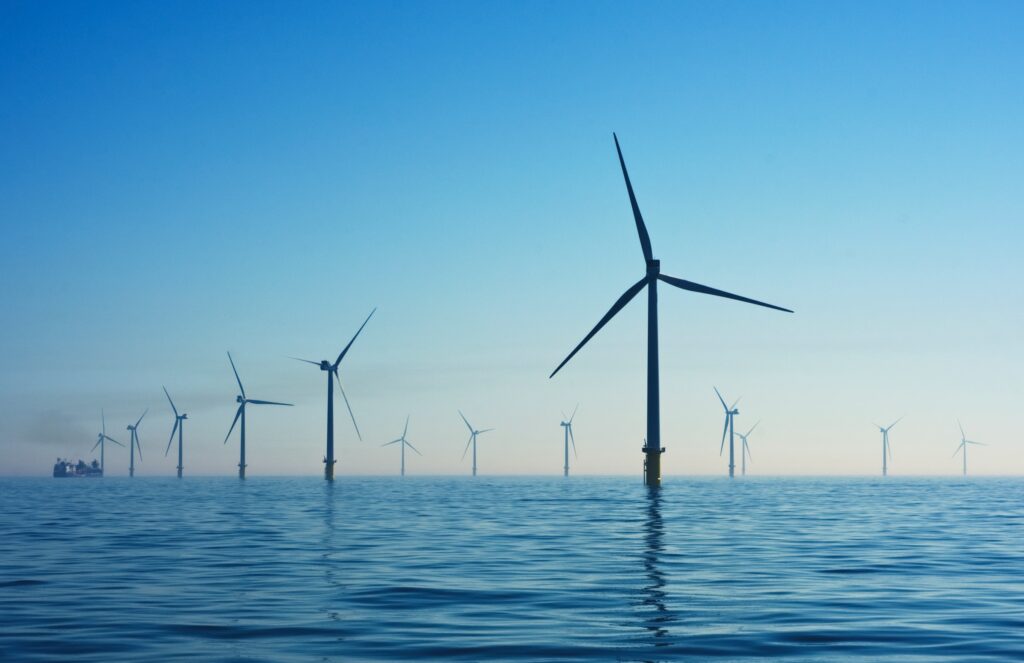Relocating to a new country comes with many decisions. One decision that is becoming increasingly important to many of us is choosing an eco-friendly home. As the world’s collective environmental consciousness grows, more people are seeking out sustainable, energy-efficient properties. This heightened awareness has led to the adoption of various eco-friendly measures in residential properties, including the use of sustainable materials, energy-efficient appliances, and innovative design approaches that minimise waste and carbon footprint.
Definition of an Eco-friendly Property
In the vast ocean of residential options, eco-friendly properties shine as a beacon of sustainable living. They are meticulously designed, built, and operated to minimise environmental impact. These properties create a harmonious coexistence between human habitat and nature by optimising energy use, reducing waste, improving water conservation, and improving living environments.
Importance of Choosing an Eco-friendly Property
With escalating environmental challenges, choosing an eco-friendly property is no longer a luxurious option but a noble responsibility. Residential buildings account for approximately 30% of total energy use in most countries, according to the World Energy Council. Your decision to move into an eco-friendly location can significantly contribute to lowering this statistic. By choosing an eco-friendly property, you are actively reducing your carbon footprint and helping combat climate change.
Benefits of Living in an Eco-Friendly Property
An eco-friendly property isn’t just good for the environment; it’s also good for you. Apart from lowering carbon footprints and contributing to a more sustainable world, living in eco-friendly homes reduces energy bills, reduces indoor pollution, increases asset value (if you own the property), and provides the satisfying feeling of contributing to global sustainability.
Location
Proximity to Public Transportation
One of the attributes of an eco-friendly property is its closeness to public transportation networks. This reduces the dependence on private vehicles, thereby lowering carbon emissions and contributing to cleaner air.
Availability of Bike Lanes and Walking Paths
Properties near bike lanes and pedestrian paths promote healthier, carbon-neutral commuting methods. They encourage outdoor activities and provide an opportunity to reduce your carbon footprint, one step at a time.
Access to Local Amenities and Services
The proximity of important amenities improves a property’s eco-friendliness. Having easy access to local amenities and services reduces the need for long-distance travel, which in turn reduces carbon emissions. Additionally, living near these amenities promotes a more sustainable lifestyle by encouraging walking or biking instead of driving.
Energy Efficiency
Presence of Energy-Efficient Appliances
Eco-friendly homes strive not only to reduce energy consumption but also to optimise it. Energy-efficient appliances, such as those rated ‘A+’ or ‘A++’ in the EU energy ratings, can significantly cut down on energy requirements. These appliances are designed to use less electricity or water while still maintaining their functionality. This not only benefits the environment but also saves households money on their utility bills in the long run.
Use of Renewable Energy Sources
In addition to reducing energy consumption and optimising it, another effective approach is the use of renewable energy sources. By integrating solar panels, wind turbines, and other green energy solutions, eco-friendly properties can further decrease their dependence on conventional energy sources and make a significant contribution towards reducing carbon footprints.

Adequate Insulation and Double-Glazed Windows
High-quality insulation and the use of double-glazed windows ensure efficient temperature regulation in the home, thereby reducing the need for artificial heating or cooling. This not only saves energy but also lowers utility bills. Additionally, proper insulation and double-glazed windows also help to minimise noise pollution, creating a more peaceful and comfortable living environment.
Energy Performance Certificate
In the UK, an indicator of the energy efficiency of a property is the Energy Performance Certificate (EPC). The EPC rating is a measure of a property’s energy efficiency, with A being the most efficient and G being the least efficient. The rating is based on the amount of energy used per square metre and the level of carbon dioxide emissions. An ‘A’ or ‘B’-rated property signifies a more energy-efficient home. According to The English Housing Survey 2018 to 2019, there are approximately 5 million dwellings (out of around 23 million in England) with an EPC rating of A to C. This represents about 22% of properties with this higher energy efficiency rating. It’s worth noting that the majority of homes in the UK fall within the D to C range.
Water Conservation
Water-saving Fixtures
Water-efficient fixtures, such as low-flow toilets, taps, and showerheads, play a vital role in conserving water. These fixtures are designed with innovative technology that reduces water consumption without compromising performance.
Rainwater Harvesting Systems
Rainwater harvesting systems allow the collection and subsequent use of rainwater, reducing dependence on municipal water supplies and contributing to water conservation. Additionally, rainwater harvesting systems can also help reduce stormwater runoff and erosion by capturing and storing rainwater for later use. This not only conserves water but also helps replenish groundwater levels and support local ecosystems.
Efficient Irrigation Systems for Outdoor Spaces
Eco-friendly properties often incorporate efficient irrigation systems for their gardens, reducing waste and optimising water use. These systems can include drip irrigation, which delivers water directly to the roots of plants, minimising evaporation and ensuring efficient absorption.
Waste Management
Availability of Recycling Facilities
Recycling facilities contribute to a variety of environmental benefits. They help conserve natural resources by diverting recyclable materials from landfills. Recycling reduces the need for raw material extraction, energy-intensive manufacturing processes, and the associated greenhouse gas emissions. Recycling gives valuable resources a new lease on life, reducing the demand for new materials and preserving natural habitats.
Composting Options or Communal Composting Areas
Composting or communal composting areas provide an environmentally friendly solution for managing biodegradable waste. This not only reduces the amount of waste sent to landfills but also promotes sustainable agriculture practices by replacing chemical fertilisers with nutrient-rich compost. Additionally, composting helps reduce methane emissions from decomposing organic waste in landfills, contributing to the fight against climate change.
Sustainable Materials
The Role of Sustainable Materials in Eco-Friendly Properties
Sustainable materials are cornerstone elements in the construction of eco-friendly homes. These materials have lower environmental footprints, either by virtue of their source, manufacturing process, disposal, or lifetime performance. Building materials that have a reduced environmental impact, such as recycled, reclaimed, or sustainably sourced materials, contribute to the ‘eco-friendly’ status of a home.
Why Locally-Sourced Materials Matter
In addition to the use of sustainable materials, locally sourced materials are a vital component in the practice of eco-conscious building. Using locally sourced materials means supporting the local community and economy, but more importantly, it significantly contributes to lessening the overall environmental impact of the construction process. This is largely due to reduced energy consumption in transportation, which drastically reduces the amount of carbon emissions produced.
Smart Home Technology
The Intersection of Technology and Sustainability
Eco-friendly homes are not just about resource-efficient materials and designs; they are also about integrating advanced technology to manage resources optimally and intelligently. This is where smart home technology comes into play. Smart thermostats, energy-efficient lighting systems, and automated appliances all contribute to an eco-friendly home by reducing energy consumption and providing users with greater control over their home’s environmental impact.

Green Spaces
Presence of Gardens or Green Roofs
Gardens or green roofs not only serve aesthetic purposes but also help maintain biodiversity, improve air quality, and provide local growing opportunities. Additionally, green spaces such as gardens or green roofs can act as natural insulation, reducing the need for artificial heating and cooling. They also create a calming and relaxing environment, promoting mental well-being for residents.
Access to Communal Parks or Green Areas
People who have access to communal parks or green areas are more likely to engage in physical activities such as walking, jogging, or playing sports, which can improve their overall fitness and well-being. These spaces also serve as gathering places for residents, fostering a sense of belonging and social interaction within the community.
Use of Native Plants and Trees
Native plants and trees are well adapted to the local climate and soil conditions, making them more resilient to pests and diseases. This reduces the need for pesticides and fertilisers, promoting a healthier environment for both humans and wildlife. Additionally, native plants provide habitat and food sources for native birds, butterflies, and other pollinators, contributing to biodiversity conservation.
Certification and Standards
Look for Eco-Certifications
When on the lookout for an eco-friendly property, it’s advantageous to keep an eye out for environmental certifications like BREEAM UK, a globally recognised mechanism for assessing, rating, and certifying sustainability benchmarks in building design, construction, and operation. Other certifications can include the excellent rating given by the Code for Sustainable Homes, which, although it doesn’t apply to new builds anymore, remains a significant indicator of commitment to sustainability in homes that do have it.
Beyond these, other certifications have also emerged as relevant in the UK, such as the Passivhaus standard, which certifies buildings that maintain comfortable indoor temperatures with very low energy use. Additionally, in a bid to create more sustainable homes, the Future Homes Standard is being introduced in England in 2025. This new initiative aims to ensure all newly-built homes are future-proofed with low-carbon heating and world-leading energy efficiency standards.
The Future of Eco-Friendly Housing
The UK government is aware of how vital energy efficiency is for the future of housing. By 2035, as part of its Clean Growth Strategy, all privately rented properties in the UK will likely need to have an EPC rating of at least C. This aim is part of the country’s wider efforts to reduce all greenhouse gas emissions to net zero by 2050. However, the lack of sufficient funding and support for retrofitting existing housing stock hinders this future-proofing of homes. Many older homes in the UK still have inadequate insulation and outdated heating systems, making it difficult and costly to achieve low-carbon heating and energy efficiency standards. However, it is encouraging to see that UK properties are becoming more energy efficient. By using the EPC system and giving energy-efficient homes top priority, you can actively contribute to a more environmentally friendly future while also enjoying lower energy costs.
The decision to live in an eco-friendly property represents a significant step towards adopting a sustainable lifestyle. It’s a move that allows us, as inhabitants of this planet, to relax in the comforts of home while ensuring that our choices have the least possible impact on the environment. Putting sustainability at the forefront of our decisions echoes Adleo Relocation’s commitment to aiding you in your quest for eco-friendly living.
Speak to one of our experts or send a message today to start your search for an eco-friendly property.






